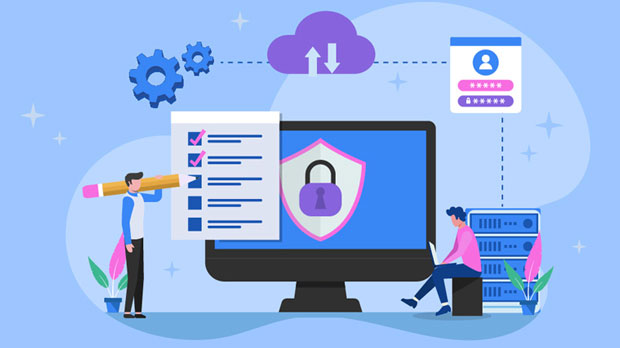In the modern e-commerce landscape, managing multiple accounts across various platforms has become essential for businesses that want to scale and succeed. However, this practice presents numerous challenges, particularly in regard to the security, privacy, and automation of these accounts. residential proxies have emerged as a crucial tool in overcoming these challenges, enabling e-commerce businesses to efficiently manage multiple accounts without risking IP bans or other restrictions. By using real residential IPs, companies can operate more discreetly, avoid detection, and ensure seamless access to their accounts across various regions and platforms. What Are Residential Proxies?Residential proxies are a type of proxy server that uses IP addresses provided by Internet Service Providers (ISPs) to route web traffic. Unlike data center proxies, which are often associated with bulk activities and can be easily detected by websites, residential proxies are linked to real residential addresses. These proxies are considered less suspicious by websites, making them a popular choice for tasks that require anonymity, security, and the ability to bypass geographical restrictions.Residential proxies are especially valuable in e-commerce because they provide a legitimate and secure way to manage multiple accounts without risking IP bans or being flagged as bots. E-commerce platforms, such as Amazon, eBay, and Shopify, are often strict about account activity and can impose severe penalties, including suspensions, for any sign of automated or suspicious behavior. Using residential proxies ensures that the activity from each account is associated with a real user, reducing the chances of detection.The Role of Residential Proxies in Multi-Account Management1. Enhancing Account SecurityOne of the biggest challenges in managing multiple e-commerce accounts is maintaining security. If multiple accounts share the same IP address or show other patterns of suspicious activity, platforms may flag these accounts for review. This can lead to account suspensions, bans, or even the loss of valuable business data. Residential proxies mitigate this risk by masking the true IP address and distributing account access across various IPs, making it harder for e-commerce platforms to detect unusual patterns.By using a pool of residential proxies, e-commerce businesses can rotate IPs regularly to simulate normal user behavior. This increases the anonymity of each account, reducing the chances of triggering platform algorithms designed to detect fraudulent or automated activities. With residential proxies, businesses can securely access and manage their accounts without fearing the negative consequences of being flagged.2. Bypassing Geographical RestrictionsE-commerce platforms often impose geographical restrictions on certain products or services, limiting access based on the user's location. This is a common issue for businesses that wish to sell globally or access region-specific content. Residential proxies solve this problem by providing IP addresses from different countries, allowing businesses to access restricted content, manage accounts from different regions, and localize their approach to target specific markets.For instance, a retailer based in the U.S. could use residential proxies to access platforms in the European or Asian markets, opening up new avenues for growth and market expansion. By leveraging residential proxies, businesses can ensure that their accounts appear as though they are located in different regions, making it easier to test pricing strategies, conduct market research, or track competitor activity in various countries.3. Avoiding Account Bans and RestrictionsMany e-commerce platforms monitor account activities closely to detect suspicious patterns, such as logging in from unusual locations, using bots, or violating platform policies. When these behaviors are detected, accounts can be banned or restricted, leading to potential losses in revenue and customer trust.Residential proxies help businesses avoid such restrictions by disguising their real location and creating the illusion of normal user behavior. By rotating through a range of real residential IPs, businesses can maintain a low profile and continue to operate multiple accounts without fear of being flagged by platform algorithms. This approach is especially important for businesses that need to scale quickly and manage several accounts simultaneously without risking their reputation or account status.4. Efficient Automation and ScalabilityIn the world of e-commerce, automation is key to managing large volumes of accounts and operations efficiently. However, automation tools can sometimes trigger platform security systems, leading to account restrictions. Residential proxies enable businesses to scale their operations by automating tasks like price monitoring, inventory management, or order fulfillment, without triggering security measures.By using residential proxies, businesses can ensure that their automated processes appear as natural as possible. Each task can be performed using different IPs, simulating the actions of real users, and reducing the risk of being flagged as a bot. This level of automation allows e-commerce businesses to handle larger volumes of work, streamline their operations, and reduce manual labor.5. Improving Customer Experience and PersonalizationAnother crucial aspect of e-commerce is providing a personalized and localized experience for customers. Residential proxies help businesses analyze the behavior of users in different regions and create targeted marketing campaigns based on location-specific data. For example, a company can use proxies to gather information about local trends, preferences, and competitor pricing in various countries or regions.By using residential proxies, businesses can also test their websites from the perspective of different users, ensuring that their content, pricing, and offers resonate with the target audience. This allows e-commerce platforms to tailor their marketing efforts more effectively, boosting customer engagement and satisfaction.Residential proxies are an essential tool for managing multiple e-commerce accounts effectively and securely. They help businesses overcome the challenges of account security, geographical restrictions, and platform bans, ensuring smooth and efficient operations. By enabling anonymity, bypassing restrictions, and improving automation, residential proxies provide a competitive advantage in the rapidly evolving e-commerce environment.Whether businesses are managing accounts across various platforms, expanding into new markets, or automating operations, residential proxies offer the flexibility and security needed to scale. As e-commerce continues to grow, leveraging tools like residential proxies will become increasingly important for businesses seeking to stay ahead in a competitive market.
Jun 20, 2025



































































